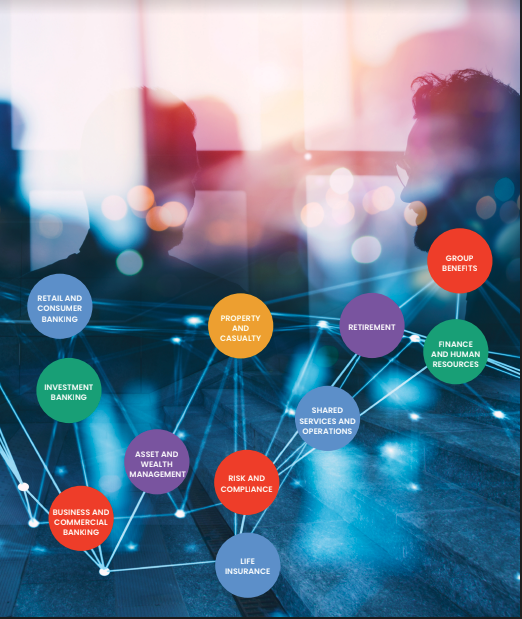Automated Insurance Underwriting Software
Insurance underwriting is part art and part science. The artistry, of course, falls directly into the hands of each individual underwriter, but the science can be improved through modern technology.
Automated insurance underwriting software has been developed in response to the need of insurance companies to streamline the underwriting process, make the best use of resources, and scale their underwriting capacity.
Pricing Models: The Standard Automated Insurance Underwriting Software
As a baseline for underwriting automation, insurance organizations use pricing models. These intricate pricing engines are based largely on huge volumes of claims data and other data collected over years.
Without a doubt, pricing models help underwriters narrow down the scope of their pricing decisions, but there is one glaring element that makes the use of pricing models difficult and time-consuming.
The Challenge of Unstructured Data
Pricing models rely solely on structured data. However, the documents underwriters need is most often found in highly variable, unstructured document types like email with PDF attachments, postal mail, faxes, or even handwritten notes.
At its essence, the dilemma underwriters face is to try to convert high volumes of unstructured documents into a structured format that is ingestible and usable for a pricing model.
Almost every insurance category is complex from a document perspective. To understand the scope of the challenge, consider an underwriter working on assessing the risks involved in issuing a life insurance policy.
The underwriter will likely need to review:
- Insurance application forms
- Medical records, including handwritten notes
- Proof of identity documentation
- Proof of Address documentation
- Proof of Income
This is by no means an exhaustive list. But the list illustrates the highly variable nature of the documents the underwriter needs to do the job.
In the absence of some way to automate document understanding, underwriters are left with the prospect of manually sorting and reviewing each document, extracting the relevant data from it, and entering that data in a structured way into a pricing model.
That level of manual processing is time-consuming, labor-intensive, and highly inefficient. It robs underwriters of the time they need to practice their art and make accurate risk evaluations that lead to appropriate pricing for policies.
What’s more, the data scientists developing more advanced pricing models are not able to leverage the full richness of incoming claims data.
Technologies Used in Automated Insurance Underwriting Software
To address this challenge, insurance companies have invested in several types of automated insurance underwriting software and technologies. Historically, most of these technologies have left something to be desired.
For example, optical character recognition (OCR), an early form of AI, has been used to digitize documents, changing them from unstructured to structured data. However, early versions of OCR were effective for specific characters and font types, largely unsuitable for the sheer volume of document types insurers must handle.
Similarly, rules-based engines have been employed for digitization purposes, but the limitation of rules-based engines is clear. Of necessity, rules-based engines can only parse information from expected document forms. They are unable to accurately interpret document forms for which there are no corresponding rules.
Machine learning has been an advancement over simple OCR or rules-based engines. Machine learning is more agile and can interpret and understand a wider range of document types and formats. The limitation of software combined with simple machine learning is that machine learning models can take months or even years to train for a high level of accuracy in document understanding. Such models simply cannot scale to handle the needs of underwriters adequately.
Using Deep Learning for Automated Insurance Underwriting
Today, there is another option for insurance companies to consider. Deep learning and transfer learning solve the scalability issue inherent in earlier machine learning models. A good deep learning model has been pre-trained on millions of documents. Because of this built-in extensive training, deep learning models cut the time it takes for a model to be trained for underwriting purposes by a huge amount. Rather than taking months or years, a deep learning model can be trained in a matter of days or weeks to provide a highly accurate document understanding.

Benefits of Deep Learning for Insurance Underwriting Automation
Employing deep learning technology benefits Insurance companies in many ways, such as:
- Reducing or eliminating underwriter manual document review
- Giving underwriters back the time they need to practice the real art of underwriting, analyzing and assessing risks armed with data
- Saving costs associated with manual review
- Generating new revenue growth by accelerating the underwriting process
- Reducing risks associated with human error in manual review
- Improving underwriter and customer experience
- Unlock more data to improve pricing models
Instabase: The Best Answer for Automated Insurance Underwriting Software
The Instabase Automation Platform for Unstructured Data leverages deep learning technology and extensible building blocks to help insurers automate their underwriting processes. Instabase goes to work right away, employing deep learning to ingest any document in any format, structure it according to the requirements of the software in place (such as a pricing engine), and return highly accurate, reliable results.
To learn more about the Instabase solution for insurance, please check out our insurance solution page.




